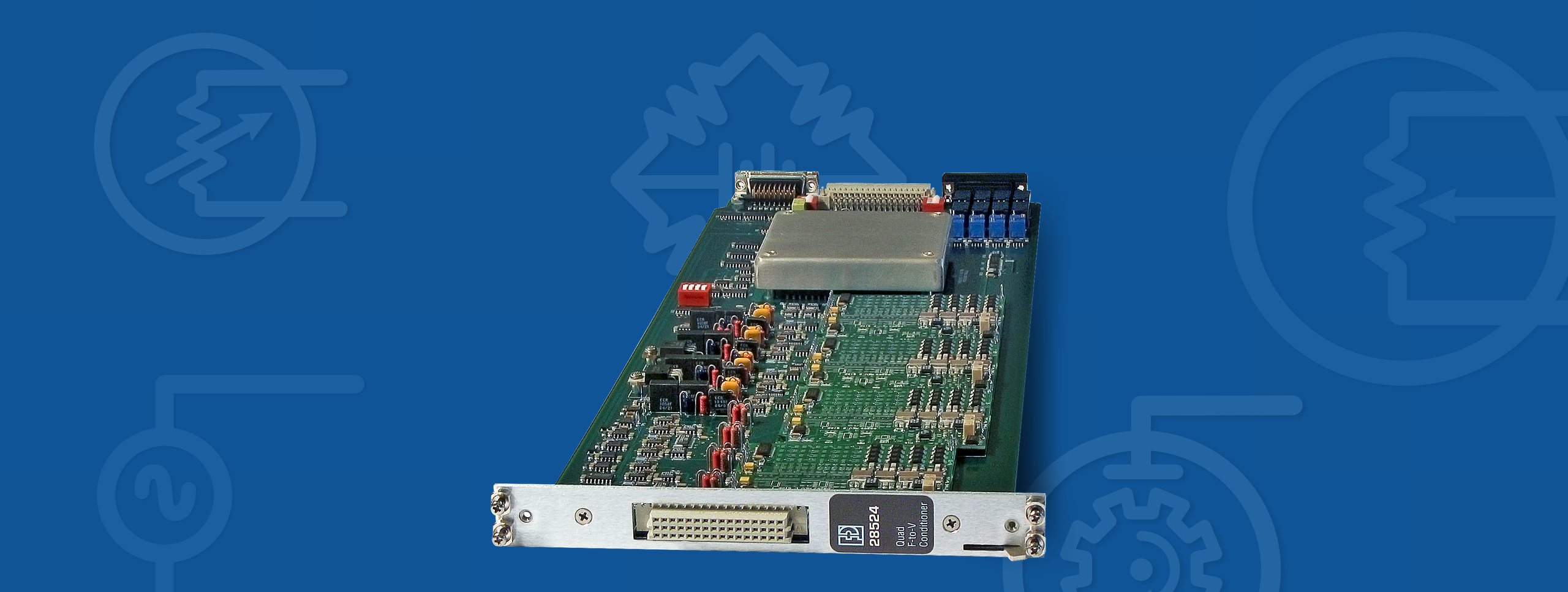Frequency-to-Voltage Converter Module for Conditioning of Pulse, Rate and Frequency Transducers
The 28524 4-Channel Frequency-to-Voltage Converter Module provides conditioning for pulse, rate and frequency transducers, such as speed sensors, tachometers, vane anemometers, flow meters, and position encoders. This card gives precise DC output voltage proportional to input frequency or pulse rate for frequencies from 1 Hz to 50 kHz with amplitude levels from 10 mV to 100 V. A second output is a clean 5 V square wave representation of the input frequency.
Distorted inputs such as signals with ringing, crossover, or harmonic distortion are accurately detected with programmable analog filtering, as well as programmable trigger threshold, slope and trigger hold-off time. A programmable pre-scaler allows once per rev measurements on sensors detecting multiple gear teeth or flow meter vanes.
The 28524 4-Channel Frequency-to-Voltage Converter Module is a member of the Precision 28000 family of signal conditioners.
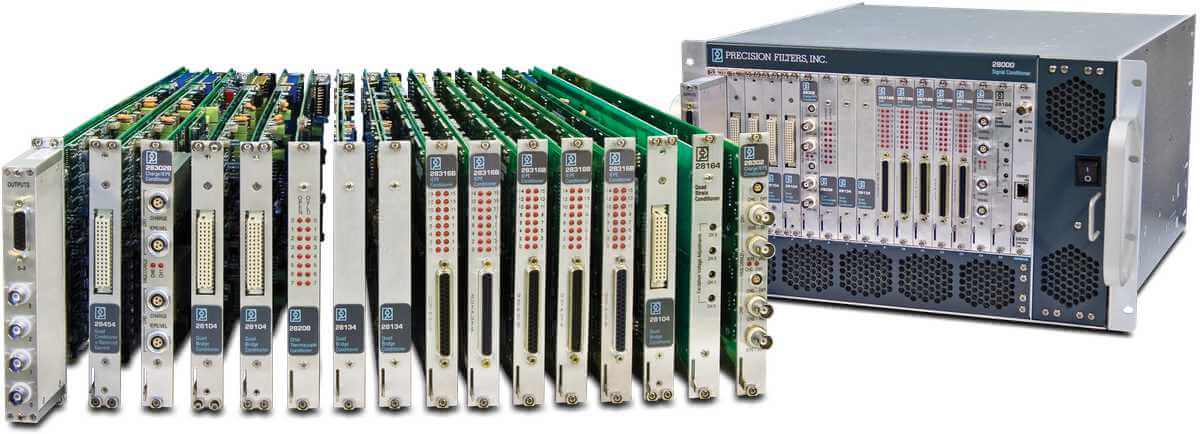
Learn more about the 28000 Signal Conditioning System »
Quad-Channel Frequency to Voltage Converter
28524 Quad Frequency-to-Voltage Converter Module Features:
- DC output representative of input frequency
- 5 V square wave representative of input frequency
- GUI readout of input frequency
- Programmable scaling of DC output (Fmin, Fmax, Vmin, Vmax)
- Programmable trigger threshold, slope and hold-off
- Programmable pre-scaling
- Programmable low-pass filter
- 4 channels per card
- 1 Hz to 50 kHz frequency range
- 10 mV to 100 V input
- 16-bit output voltage resolution
- Test input for frequency input simulation
Programmable Distortion Control Triggers:
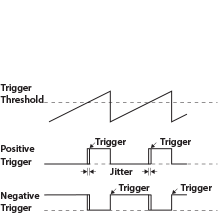
Selectable Trigger Type
The selectable edge trigger allows the user to choose the positive (leading) or negative (trailing) signal edge. Selecting the edge with the sharper transition produces a more stable output.
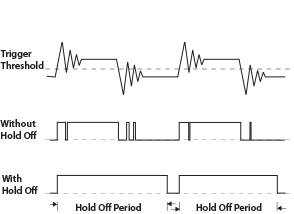
Programmable Trigger Hold Off Period
The programmable trigger hold-off time prevents false triggering on signal edges which cross the trigger threshold voltage but are not representative of the actual input frequency. On each valid edge, the trigger circuit is disabled for a period of time to ignore the false edges. An input signal with ringing could cause false triggering.
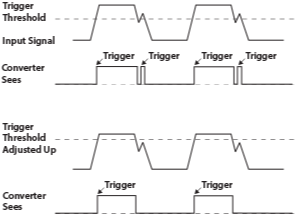
Programmable Trigger Threshold
The programmable trigger threshold allows the user to adjust the trigger voltage up or down to avoid distorted portions of the input signal. A signal with crossover distortion could cause false triggering.
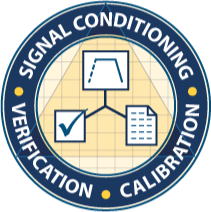
Verification at Test Time
Continual setup, tear down and reconfiguring of sensitive test equipment demands a rigorous protocol to prove that every channel is operating correctly at test time. The 28000 System provides a layer of built-in verification and validation capability to confirm proper operation of the measurement system including sensor and cable. Upon completion of the verification testing, a status report is provided as a defendable means to document system validity at the time of the actual test.
Yearly Calibration
All test systems require periodic calibration. The Precision 28000’s automated built-in test capabilities allow the user to perform convenient, affordable NIST traceable yearly calibration tests on-site without removing the system from the equipment rack. This eliminates the need for expensive off-site calibrations and system downtime.

